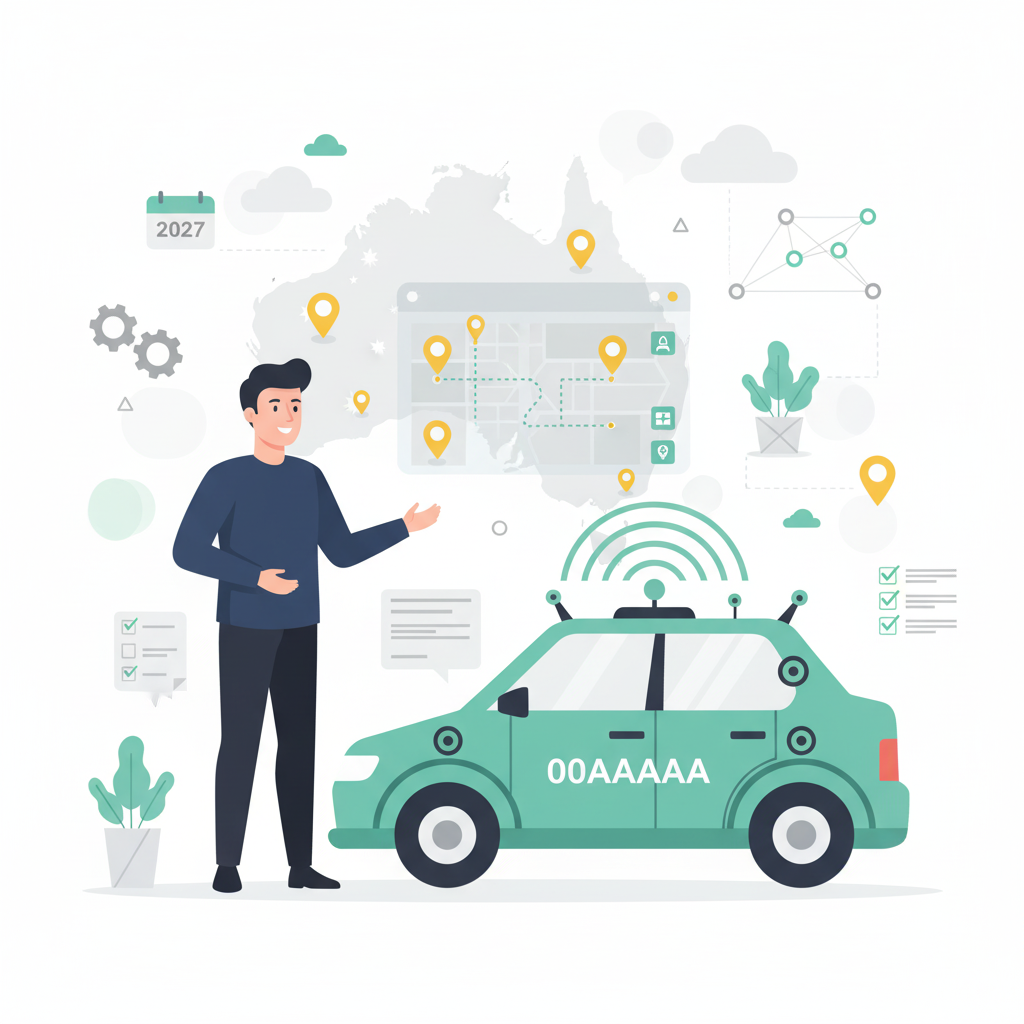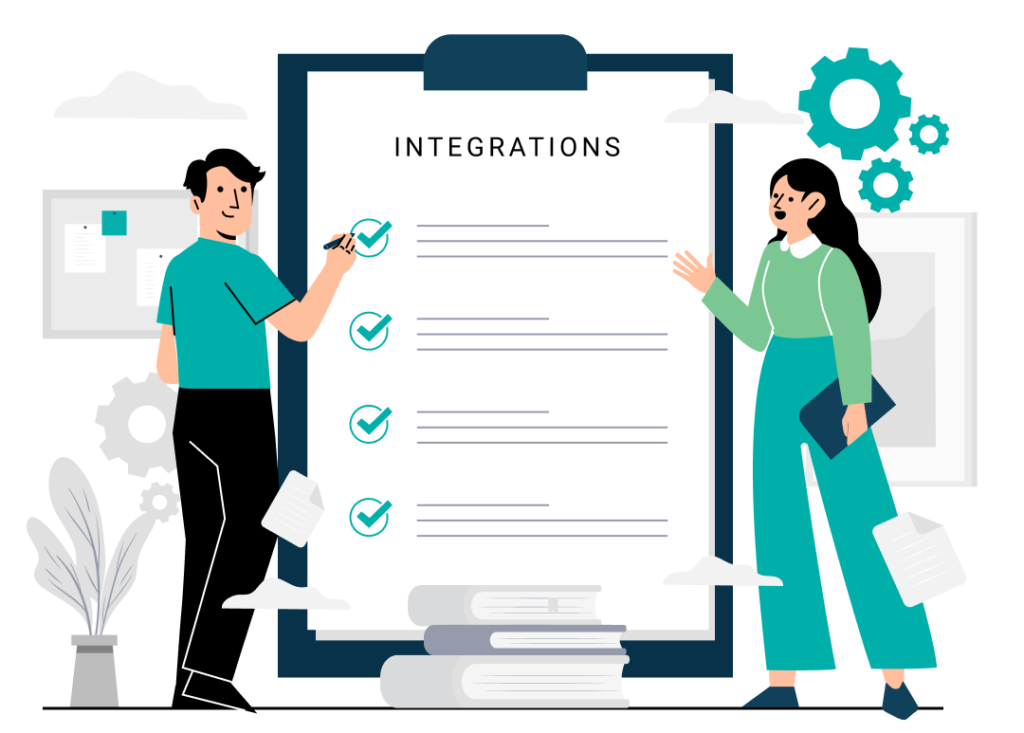Autonomous Vehicles and Robotics in Australia: Strategic Overview for Technology Leaders
Autonomous vehicles are moving from research projects to commercial deployment. Waymo runs robotaxis in Phoenix and San Francisco, handling over 100,000 paid trips weekly. Amazon operates the largest warehouse robotics deployment globally. And NSW has partnered with Waymo to bring robotaxi trials to Sydney.
The window for strategic planning is now open. Australias regulatory framework targets 2027 for completion, giving you 18-24 months to assess architectures, evaluate vendors, and build organisational capability before widespread commercial deployment becomes feasible.
This guide provides the strategic context you need, with deep-dive articles covering technical architecture, vendor landscape, regulatory requirements, implementation frameworks, and commercial applications.
What Is the Current State of Autonomous Vehicle Deployment in Australia?
Australia is preparing for autonomous vehicle deployment by 2027, with NSW leading through partnerships with companies like Waymo for robotaxi trials in Sydney. While full commercial deployment remains limited, the regulatory framework is actively developing. This creates a strategic planning window to assess technical architectures, evaluate vendor partnerships, and build organisational capability.
The National Connected and Automated Vehicle Action Plan sets the coordination framework, with state-level trials validating technology in Australian conditions. NSWs approach—partnering with proven commercial operators rather than allowing unrestricted testing—reflects a measured regulatory philosophy.
For comprehensive coverage of the Australian regulatory frameworks for autonomous vehicles, including the Waymo trials in NSW, state-by-state variations, and the complete roadmap to 2027, see our detailed regulatory guide.
What Are the Main Components of an Autonomous Vehicle Technology Stack?
The autonomous vehicle stack comprises three core layers: perception (sensors including LiDAR, cameras, radar), planning (route and behaviour decision algorithms), and control (vehicle actuation systems). The choice between sensor fusion and vision-only approaches represents a key architectural decision affecting cost, capability, and supplier relationships.
Waymo uses multi-sensor fusion combining LiDAR, cameras, and radar for redundant perception. Tesla relies on cameras and neural networks alone. Both approaches have trade-offs around cost, computational requirements, and handling of edge cases.
Our comprehensive technical deep dive covers sensor fusion versus vision-only architectures, comparing LiDAR-based systems with camera-only approaches, edge computing considerations, and Level 4/5 autonomy requirements.
Which Companies Are Leading the Robotaxi Market Globally?
Waymo leads commercial robotaxi deployment with operations in Phoenix, San Francisco, and Los Angeles. Tesla pursues a vision-only approach across its consumer fleet. Nvidia provides the dominant computing platform powering most autonomous systems. Other players include Cruise (GM-backed, currently paused), Aurora (trucking focus), and Amazon through its Zoox acquisition.
Each company represents distinct partnership and integration opportunities. Some offer technology licensing, others pursue joint ventures, and a few operate as vertically integrated providers.
For comprehensive vendor analysis and evaluation criteria, see our guide to leading autonomous vehicle companies and their strategic approaches, covering competitive positioning, partnership models, and build versus buy considerations.
When Will Autonomous Vehicle Regulations Be Finalised in Australia?
The National Connected and Automated Vehicle Action Plan targets 2027 for comprehensive regulatory framework completion. NSW is advancing most rapidly with active trial approvals, while other states develop complementary frameworks.
Safety standards, insurance requirements, and liability frameworks are being developed alongside the trial programs. Understanding these requirements early supports effective compliance planning.
Our detailed guide covers NSW trials and the national deployment timeline, including state-by-state regulatory variations, safety standards, and comparison with international frameworks.
How Should Technology Leaders Prepare for Autonomous Vehicle Adoption?
Preparation begins with organisational readiness assessment covering technical capability, integration architecture, and talent requirements. Develop ROI frameworks specific to your use cases—whether fleet operations, logistics, or enterprise transport.
Evaluate build versus buy decisions for autonomous capabilities, and establish vendor evaluation criteria. The regulatory timeline creates urgency for organisations to move beyond awareness to active planning and pilot programmes.
Our enterprise implementation framework and ROI calculation guide provides actionable methodologies for readiness assessment, integration architecture, phased deployment, and talent requirements.
What Is a Robotaxi and How Does It Work?
A robotaxi is an autonomous vehicle providing ride-hailing services without a human driver, operating at Level 4 or higher autonomy within defined operational design domains. Waymo operates the largest proven commercial robotaxi service in Phoenix, completing millions of paid trips.
The technology combines perception systems, AI-driven planning, and precise control within geofenced operational areas. Commercial viability has been proven, though operations remain limited to specific geographic zones.
For detailed commercial analysis and proven use cases, see our guide to commercial applications from robotaxis to warehouse automation, covering feasibility assessment, ROI evidence, and application selection frameworks.
What Is the Difference Between Level 4 and Level 5 Autonomy?
Level 4 autonomy operates fully without human intervention within defined conditions (called the operational design domain), while Level 5 handles all driving scenarios without geographic or weather limitations. Current commercial deployments focus on Level 4 within constrained environments.
For strategic planning, Level 4 capabilities are commercially relevant now—Waymos robotaxis operate at this level. Level 5 remains a longer-term consideration with no commercial deployments yet achieved.
The technical trade-offs between LiDAR and camera-based systems significantly impact which autonomy levels are achievable in different operational contexts.
What Does Amazon Use Robots for in Their Warehouses?
Amazon operates the largest warehouse robotics deployment globally, using autonomous mobile robots for goods-to-person picking, inventory transport, and sortation. This represents a proven high-ROI application of autonomous technology with clear metrics for evaluation.
Warehouse robotics offers an accessible entry point to autonomous systems with established implementation patterns and measurable returns. ROI is typically achieved within 2-3 years for large-scale deployments.
Our commercial viability analysis covers warehouse automation ROI, Amazon’s implementation scale, and use case selection frameworks.
How Do I Calculate ROI for Autonomous Vehicle Implementation?
ROI calculation requires use-case-specific models addressing capital costs, operational savings, productivity gains, and risk mitigation. Warehouse automation typically shows 2-3 year payback, while robotaxi fleet operations depend heavily on operational design domain constraints and regulatory enablement.
Key variables include labor cost differential, uptime improvements, safety incident reduction, and integration complexity. Proven deployments provide benchmarks, but context-specific validation remains essential.
Our organisational readiness assessment for autonomous systems provides detailed ROI calculation frameworks, integration architecture guidance, and phased deployment methodologies.
What Are the Key Vendor Evaluation Criteria?
Vendor evaluation must balance technical maturity, commercial viability, integration compatibility, and partnership model fit. Assess proven deployment track record, technology approach alignment with use cases, regulatory compliance capability, and total cost of ownership.
Consider whether vendors offer technology licensing, joint venture opportunities, or vertically integrated solutions. Each model has distinct risk profiles and capability requirements.
For vendor selection guidance and partnership considerations, see our analysis of partnership models for autonomous technology deployment.
What Skills Does My Team Need to Manage Autonomous Systems?
Technical teams require expertise in sensor systems, edge computing, machine learning operations, fleet management platforms, and integration architectures. Leadership must understand regulatory compliance, risk management, and organizational change dynamics.
Skills development timelines range from 6-18 months depending on baseline capability. Partnership models can accelerate capability building while managing internal talent development.
The implementation framework covers talent requirements in detail, including skills assessment, training programs, and organizational capability building.
What Should I Focus on Over the Next 18-24 Months?
The 2027 regulatory timeline creates a strategic window for preparation without deployment urgency. Focus on:
- Technical Evaluation: Assess sensor fusion and vision-only approaches against your operational requirements
- Vendor Assessment: Evaluate vendor capabilities and partnership models
- Regulatory Tracking: Monitor Australian regulatory developments
- Readiness Building: Develop organizational capability and ROI frameworks
- Use Case Validation: Identify proven commercial applications relevant to your context
Organizations that complete this foundational work now will be positioned to move decisively when regulatory frameworks finalize and commercial options expand.
Resource Hub: Autonomous Vehicle Knowledge Library
Technical Foundations
- Sensor Fusion Versus Vision Only Systems in Autonomous Vehicle Architecture: Deep technical comparison of LiDAR-based sensor fusion and camera-only approaches, edge computing considerations, and Level 4/5 autonomy requirements.
Strategic Planning and Vendor Evaluation
- Autonomous Vehicle Companies and Strategic Partnership Models in 2025: Competitive landscape analysis, build versus buy framework, and vendor evaluation criteria.
- Autonomous Vehicle Implementation Framework: ROI calculation models, integration architecture, and talent requirements.
Australian Regulatory Context
- Autonomous Vehicle Regulations in Australia: State-by-state regulatory variations, Waymo NSW trials, safety standards, and 2027 timeline implications.
Commercial Applications
- Robotaxis, Warehouse Automation and Autonomous Delivery: Proven deployments, use case feasibility, ROI evidence, and application selection framework.
Frequently Asked Questions
How safe are autonomous vehicles compared to human drivers?
Waymos commercial robotaxi fleet has demonstrated lower crash rates than human drivers across millions of kilometres. Safety validation requires extensive simulation, closed-course testing, and public road trials before commercial deployment.
Who is responsible if a self-driving car crashes?
Liability frameworks are evolving, with manufacturers typically bearing responsibility during autonomous operation. Australian regulatory development addresses insurance requirements and liability allocation as part of the 2027 framework.
How do self-driving cars work in bad weather?
Weather represents a key constraint in operational design domains. Sensor fusion approaches handle adverse conditions better than vision-only systems, though all current deployments operate within weather-limited geofences.
Will autonomous vehicles replace truck drivers?
Autonomous trucking focuses initially on highway segments with human drivers handling first and last mile. Companies like Aurora target specific freight corridors rather than complete driver replacement.
What is the projected market size for robotaxis by 2030?
Market projections vary based on regulatory assumptions and technology adoption rates. Verified commercial operations remain concentrated in specific US markets, with Australian deployment dependent on 2027 regulatory completion.
How much does it cost to implement warehouse robotics?
Implementation costs vary by scale and complexity, with ROI typically achieved within 2-3 years for large-scale deployments. Amazon and other proven implementations provide benchmarks for business case development.












